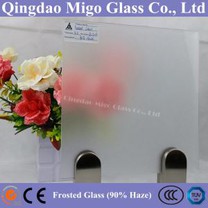Padel, a rapidly growing sport that combines elements of tennis and squash, has gained immense popularity worldwide. One of the key components of a padel court is the glass walls, which play a crucial role in the game's dynamics. The glass used in padel courts must meet specific requirements to ensure safety, durability, and optimal gameplay. However, the choice of glass can vary significantly depending on whether the court is located outdoors or indoors. This article will explore the factors to consider when selecting the right glass for outdoor versus indoor padel courts.
1. The Role of Glass in Padel Courts
In padel, the glass walls are integral to the game. They allow the ball to bounce off and remain in play, adding a unique dimension to the sport. The glass must be transparent to ensure visibility for players and spectators, durable to withstand repeated impacts, and safe to prevent injuries. Additionally, the glass must meet specific height and thickness requirements as per international padel regulations.
2. Key Considerations for Choosing Glass
When selecting glass for padel courts, several factors must be taken into account:
2.1 Safety
Safety is paramount. The glass must be tempered or laminated to prevent shattering upon impact. Tempered glass is heat-treated to increase its strength, while laminated glass consists of multiple layers bonded together, providing additional safety.
2.2 Durability
Padel courts are subject to constant impact from the ball and occasional contact with players. The glass must be durable enough to withstand these forces without cracking or breaking.
2.3 Visibility
High transparency is essential to ensure that players can see the ball clearly and spectators can follow the game. Any distortion or tinting can affect gameplay and viewing experience.
2.4 Weather Resistance (for Outdoor Courts)
Outdoor padel courts are exposed to the elements, including UV radiation, rain, wind, and temperature fluctuations. The glass must be resistant to weathering and maintain its properties over time.
2.5 Maintenance
The glass should be easy to clean and maintain, especially for outdoor courts where dirt, dust, and environmental pollutants can accumulate.
3. Glass for Outdoor Padel Courts
Outdoor padel courts present unique challenges due to their exposure to environmental factors. Here are the key considerations for selecting glass for outdoor courts:
3.1 Tempered Safety Glass
Tempered glass is the preferred choice for outdoor padel courts due to its strength and safety properties. It is four to five times stronger than regular glass and shatters into small, blunt pieces upon impact, reducing the risk of injury.
3.2 UV Resistance
Prolonged exposure to UV radiation can cause some types of glass to degrade over time. UV-resistant glass ensures that the material remains transparent and durable, even after years of exposure to sunlight.
3.3 Weatherproof Coatings
Applying weatherproof coatings can enhance the glass's resistance to rain, wind, and temperature changes. These coatings can also make the glass easier to clean and maintain.
3.4 Thickness
The thickness of the glass is crucial for durability. For outdoor courts, a thickness of 10-12 mm is typically recommended to withstand environmental stresses and repeated impacts.
3.5 Anti-Reflective Properties
Anti-reflective coatings can reduce glare from sunlight, improving visibility for players and spectators. This is particularly important for outdoor courts where direct sunlight can create challenging playing conditions.
4. Glass for Indoor Padel Courts
Indoor padel courts are protected from the elements, but they still require glass that meets high standards of safety and performance. Here are the key considerations for selecting glass for indoor courts:
4.1 Laminated Safety Glass
Laminated glass is often used for indoor padel courts. It consists of two or more layers of glass bonded together with an interlayer, typically made of polyvinyl butyral (PVB). This construction provides excellent safety, as the interlayer holds the glass together upon impact, preventing shattering.
4.2 Acoustic Properties
Indoor courts can benefit from glass with sound-dampening properties. Laminated glass can reduce noise levels, creating a more comfortable environment for players and spectators.
4.3 Clarity and Transparency
High clarity is essential for indoor courts to ensure optimal visibility. Low-iron glass, which has reduced iron content, can provide superior transparency and color neutrality.
4.4 Thickness
For indoor courts, a thickness of 8-10 mm is usually sufficient. The reduced thickness can help lower costs while still providing the necessary durability and safety.
4.5 Ease of Maintenance
Indoor courts are less exposed to dirt and environmental pollutants, but the glass should still be easy to clean. Anti-smudge coatings can help maintain clarity and reduce the frequency of cleaning.
5. Comparing Outdoor and Indoor Glass Requirements
While both outdoor and indoor padel courts require high-quality safety glass, the specific requirements differ based on their environments:
5.1 Outdoor Courts
Require glass with enhanced durability, UV resistance, and weatherproof properties. Thicker glass and anti-reflective coatings are often necessary to withstand environmental stresses and improve visibility.
5.2 Indoor Courts
Benefit from laminated glass with sound-dampening properties and high clarity. Thinner glass can be used, and maintenance is generally easier due to the controlled environment.
Conclusion
Choosing the right glass for padel courts is a critical decision that impacts the safety, durability, and overall playing experience. For outdoor courts, tempered glass with UV resistance and weatherproof coatings is essential to withstand environmental challenges. For indoor courts, laminated glass with sound-dampening properties and high clarity provides an optimal playing environment. By considering the specific requirements of each setting, you can ensure that your padel court meets the highest standards of performance and safety, providing an excellent experience for players and spectators alike.







